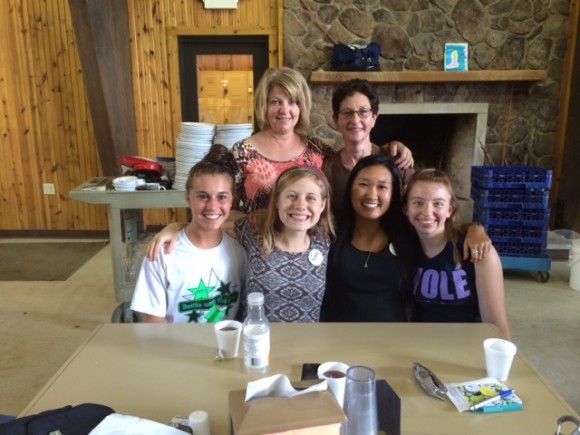Hello, my name is Karlie Hudock, and I am a senior majoring in Health Policy and Administration and minoring in Information Science and Technology in HPA. I am from Latrobe, Pennsylvania, located about 40 miles east of the city of Pittsburgh.
At Penn State, I am involved in the Future Healthcare Executives Club. By joining the club, students are able to become a student associate of the American College of Healthcare Executives. This membership opens doors for students when it comes to networking, career planning, and learning more about the world of healthcare. It is also a great way to increase professional development. This March, our group attended the 2014 Congress on Healthcare Leadership in Chicago.
My career aspirations are to work in the health IT field, hopefully in the greater Pittsburgh area. I am currently completing my internship as a summer associate at UPMC in the Information Services Division (ISD). Follow me on Twitter @karliehudock for quick updates on my experience – look for the hashtag #UPMCSA!
Hi, everyone! My internship is coming to a close in the next week, and I am pleased to say it has been one of the most challenging yet rewarding experiences of my life. I truly feel like an important part of UPMC, and it is a great feeling to have in an internship experience. I look forward to sharing my experience with other Health Policy and Administration majors upon my return to Penn State this semester.
Looking back on my original blog post at the start of the Summer Associate program, I can’t believe how far I have come and what I have learned. I completed the kick-off presentation for the Information Services Division program – what an experience! I have never had the chance to make a presentation like that before, but it was a great way to get introduced to the executive boardroom. I now feel much more prepared to give my report-out presentation.
I also had the opportunity to have lunch with Dan Drawbaugh, the CIO of UPMC, in the executive boardroom. All of the ISD SAs had the chance to introduce ourselves and tell Mr. Drawbaugh about the projects we have been working on. Other events I was able to participate in included three community service events, a Pirates game and networking dinner, and a tour of Children’s Hospital of Pittsburgh of UPMC. The service events were super fun.
All of the summer associates in attendance worked together to help make Pittsburgh a better place both for work and play. Service is a key component of the Summer Associates program, and I am happy I was able to give back so much to the community. Another part of the program I have mentioned before is executive exposure. At Penn State, many students love the opportunity to network with alumni, because we all share that special bond of being a Nittany Lion. I felt the same enthusiasm when speaking with individuals from across UPMC about my summer experience and the opportunities that await me in the future.
My main project focus throughout the summer was the Adoption and Utilization of Observation PowerPlans at UPMC East. I gained a lot of skills in project management right from the start. I learned how to complete a project charter and executive summary, both of which guided me through the process of completing tasks and accomplishing goals. I also was able to apply skills in Microsoft Excel by running reports on the observation unit and manipulating them in the program. This led me to be able to produce reports in a way that had previously not been done. I developed charts and graphs for executive leadership to easily review. This became a regular weekly initiative and was an integral portion of the reporting phase of the project.
After rounding with hospitalists at UPMC East, I was able to determine several factors hindering the usage of PowerPlans. Now, at the conclusion of my project, I am proud to say that usage has increased in the Abdominal Pain, Chest Pain, Nausea/Vomiting, and Uncontrolled Back Pain diagnoses codes by 13%, 16%, 30%, and 33%, respectively. The goal at the initiation phase of the project was to increase usage by 10%, so this is a huge accomplishment for me. I am so grateful to all for the help I received along this 11-week journey, and I can’t wait to see where this experience takes me in the next phase of my career!












